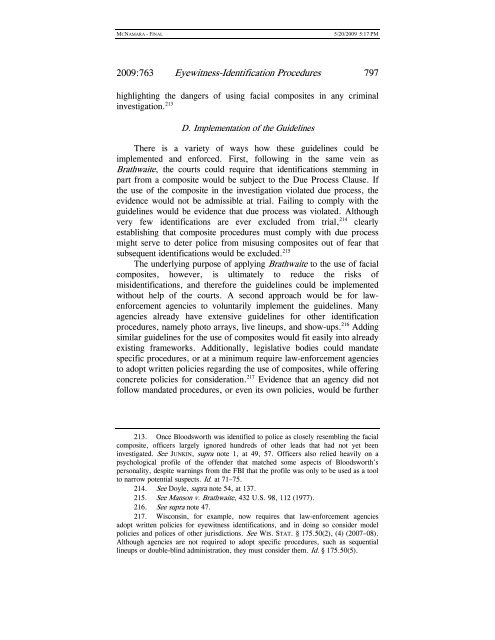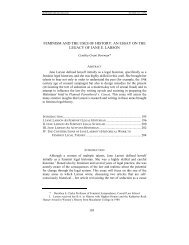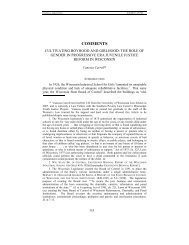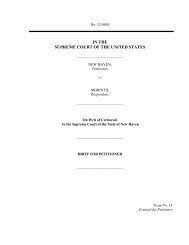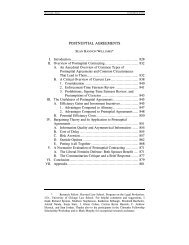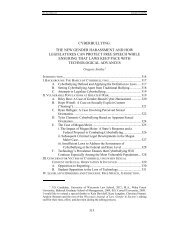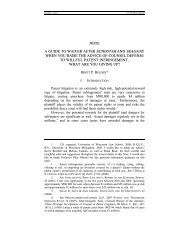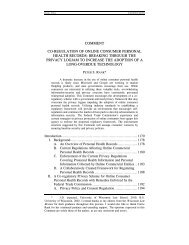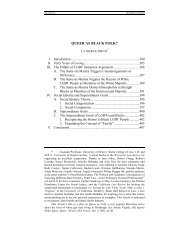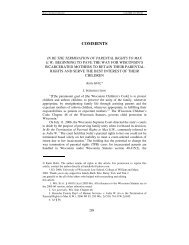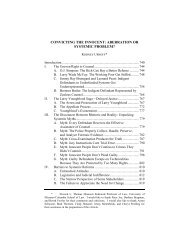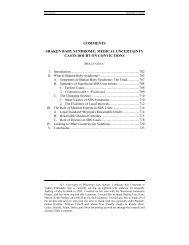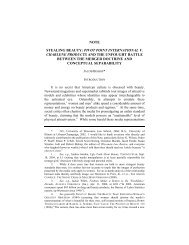comment sketchy eyewitness-identification ... - UW Law School
comment sketchy eyewitness-identification ... - UW Law School
comment sketchy eyewitness-identification ... - UW Law School
Create successful ePaper yourself
Turn your PDF publications into a flip-book with our unique Google optimized e-Paper software.
MCNAMARA - FINAL 5/20/2009 5:17 PM<br />
2009:763 Eyewitness-Identification Procedures 797<br />
highlighting the dangers of using facial composites in any criminal<br />
investigation. 213<br />
D. Implementation of the Guidelines<br />
There is a variety of ways how these guidelines could be<br />
implemented and enforced. First, following in the same vein as<br />
Brathwaite, the courts could require that <strong>identification</strong>s stemming in<br />
part from a composite would be subject to the Due Process Clause. If<br />
the use of the composite in the investigation violated due process, the<br />
evidence would not be admissible at trial. Failing to comply with the<br />
guidelines would be evidence that due process was violated. Although<br />
very few <strong>identification</strong>s are ever excluded from trial, 214 clearly<br />
establishing that composite procedures must comply with due process<br />
might serve to deter police from misusing composites out of fear that<br />
subsequent <strong>identification</strong>s would be excluded. 215<br />
The underlying purpose of applying Brathwaite to the use of facial<br />
composites, however, is ultimately to reduce the risks of<br />
mis<strong>identification</strong>s, and therefore the guidelines could be implemented<br />
without help of the courts. A second approach would be for lawenforcement<br />
agencies to voluntarily implement the guidelines. Many<br />
agencies already have extensive guidelines for other <strong>identification</strong><br />
procedures, namely photo arrays, live lineups, and show-ups. 216 Adding<br />
similar guidelines for the use of composites would fit easily into already<br />
existing frameworks. Additionally, legislative bodies could mandate<br />
specific procedures, or at a minimum require law-enforcement agencies<br />
to adopt written policies regarding the use of composites, while offering<br />
concrete policies for consideration. 217 Evidence that an agency did not<br />
follow mandated procedures, or even its own policies, would be further<br />
213. Once Bloodsworth was identified to police as closely resembling the facial<br />
composite, officers largely ignored hundreds of other leads that had not yet been<br />
investigated. See JUNKIN, supra note 1, at 49, 57. Officers also relied heavily on a<br />
psychological profile of the offender that matched some aspects of Bloodsworth’s<br />
personality, despite warnings from the FBI that the profile was only to be used as a tool<br />
to narrow potential suspects. Id. at 71–75.<br />
214. See Doyle, supra note 54, at 137.<br />
215. See Manson v. Brathwaite, 432 U.S. 98, 112 (1977).<br />
216. See supra note 47.<br />
217. Wisconsin, for example, now requires that law-enforcement agencies<br />
adopt written policies for <strong>eyewitness</strong> <strong>identification</strong>s, and in doing so consider model<br />
policies and polices of other jurisdictions. See WIS. STAT. § 175.50(2), (4) (2007–08).<br />
Although agencies are not required to adopt specific procedures, such as sequential<br />
lineups or double-blind administration, they must consider them. Id. § 175.50(5).


